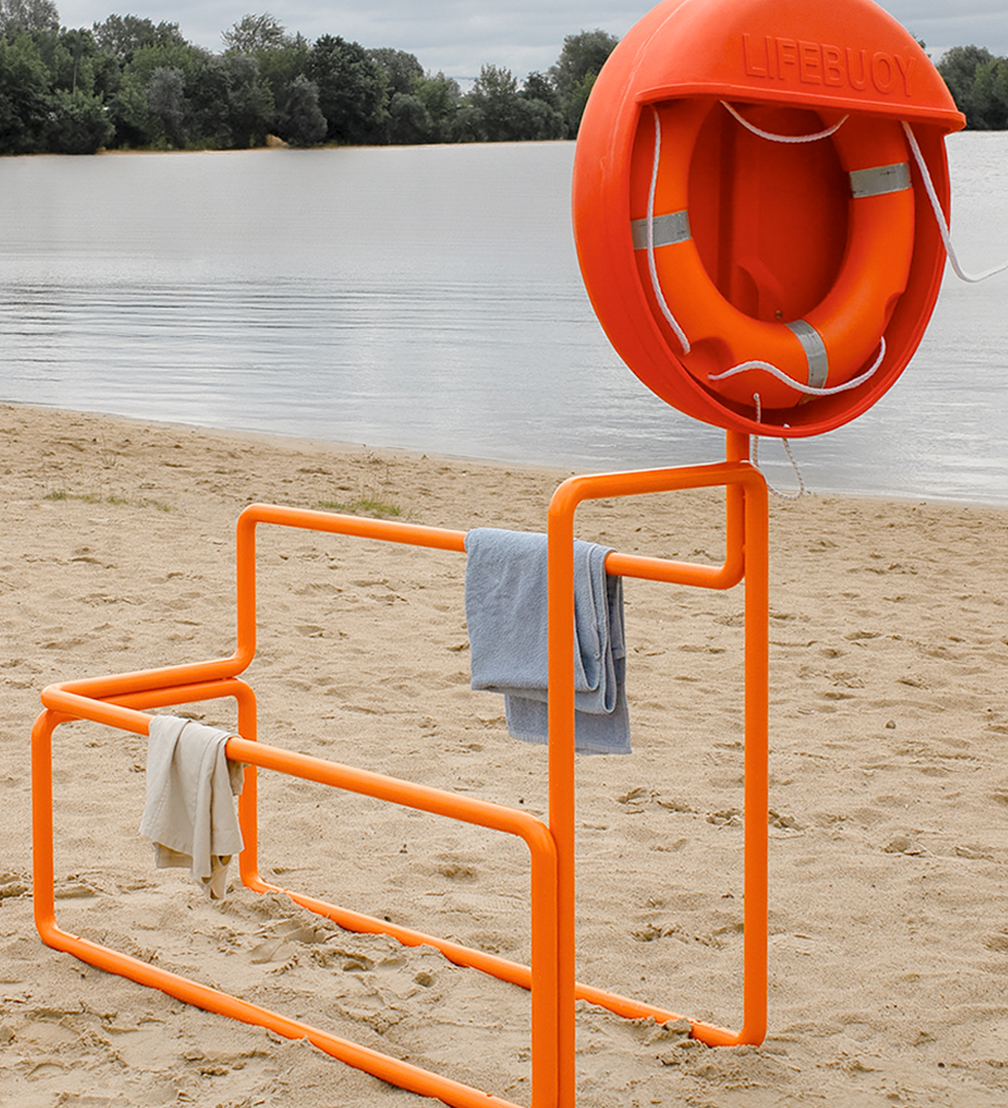
The qualification work of young designer Una Beļeviča, upon completing her studies at the Riga School of Design and Art (RSDA) Product Design programme, is a lifebuoy stand that also serves as an element of beach amenities. In addition to its functional purpose, the stand also works as a communication tool, reminding swimmers about water safety.
Una Beļeviča emphasises that swimming can be a dangerous leisure activity, and this is also proven by statistics — every year, around 100 people drown in Latvia, and according to data collected by Eurostat in 2021, the number of drownings per capita in Latvia is the highest in the European Union. «Reducing the number of drownings is a serious challenge, and during the design research process, I realised how much cooperation is needed at the national level to improve the situation,» says Una. «In solving this major problem, I set myself a small goal — to highlight lifebuoys at swimming areas.»
Swimming is a sport close to Una’s heart, which she has been involved in since primary school. Even before starting the project, the young designer had noticed that lifebuoys at swimming areas are often placed as temporary solutions by driving a stake into the ground on which to place the buoy. To a certain extent, this reflects society’s attitude towards water safety. Una’s goal was to create an infrastructure element that would remind swimmers of the potential risks in the water before they go swimming. In addition to its function as a lifebuoy holder, the object can be used to hang clothes on, sit on, or lean on while changing shoes. This would not only improve safety at swimming areas but also make them more comfortable and enjoyable.
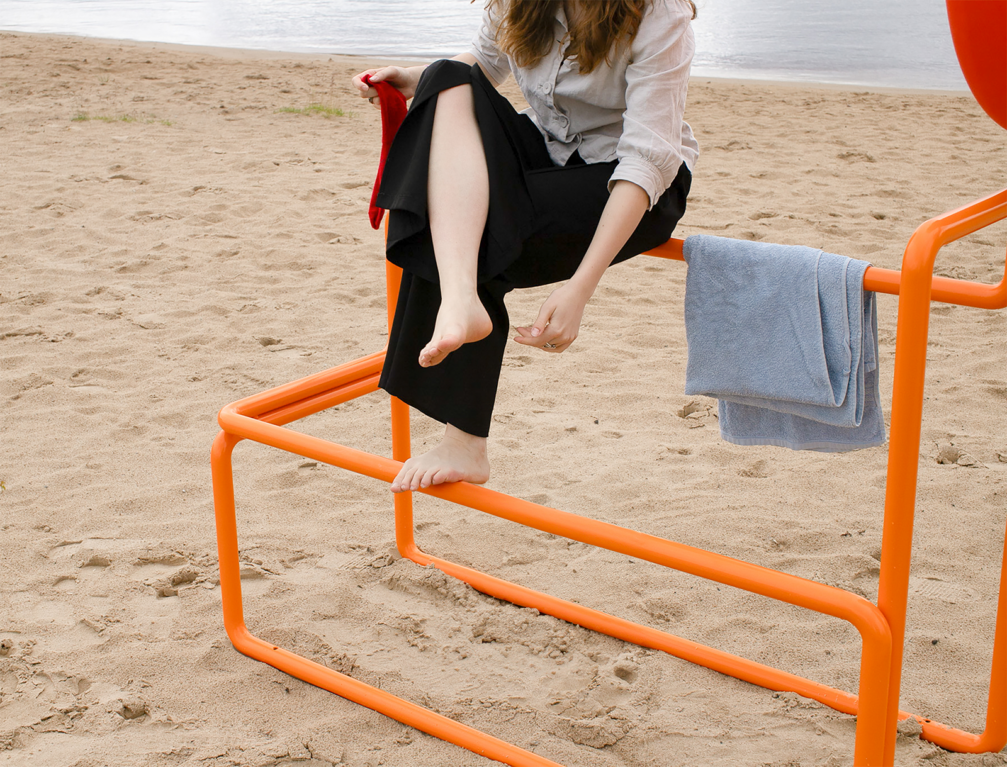
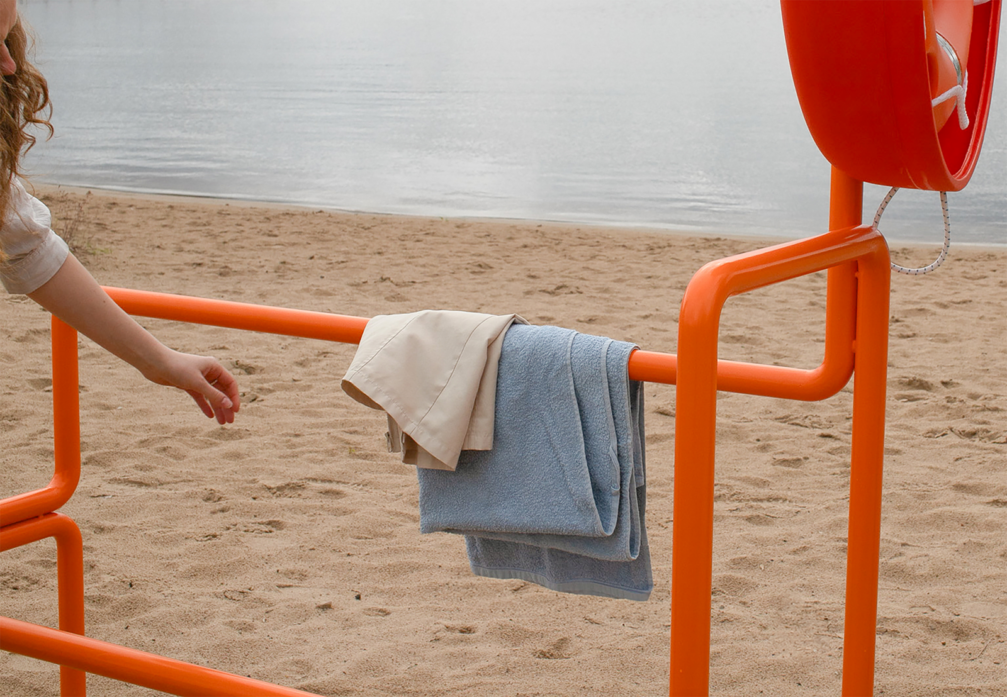
During the project development and prototype creation, Una collaborated with the association Peldēt Droši (Swim Safely) and lifeguards. The designer was also assisted by teachers Uģis Gailis and Elīna Bušmane. «Reducing high drowning rates is not possible without cooperation. And the creation of a lifebuoy storage unit would not have been possible without it either. The product design programme has inspired me to become passionate about the design process and has also given me an understanding of responsible design development,» says Una.
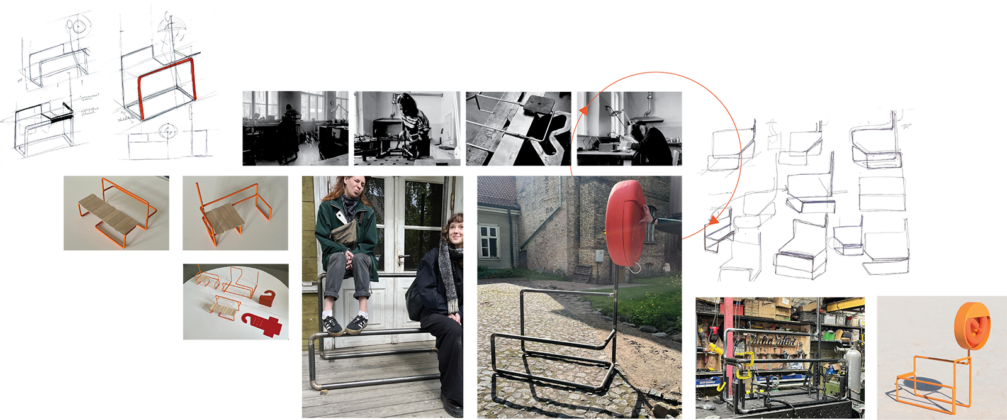
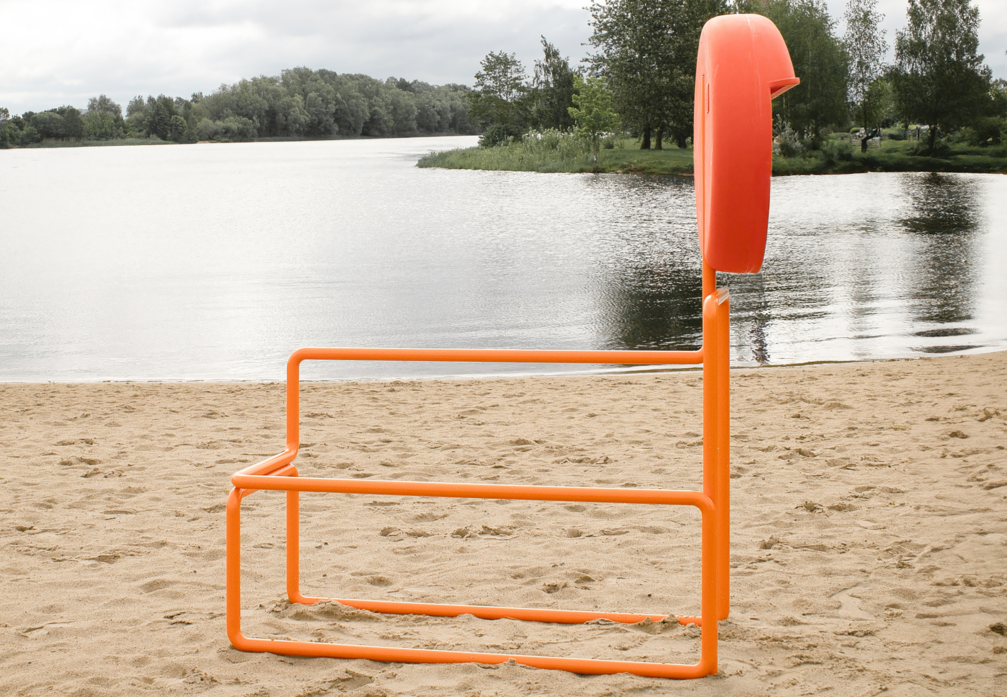
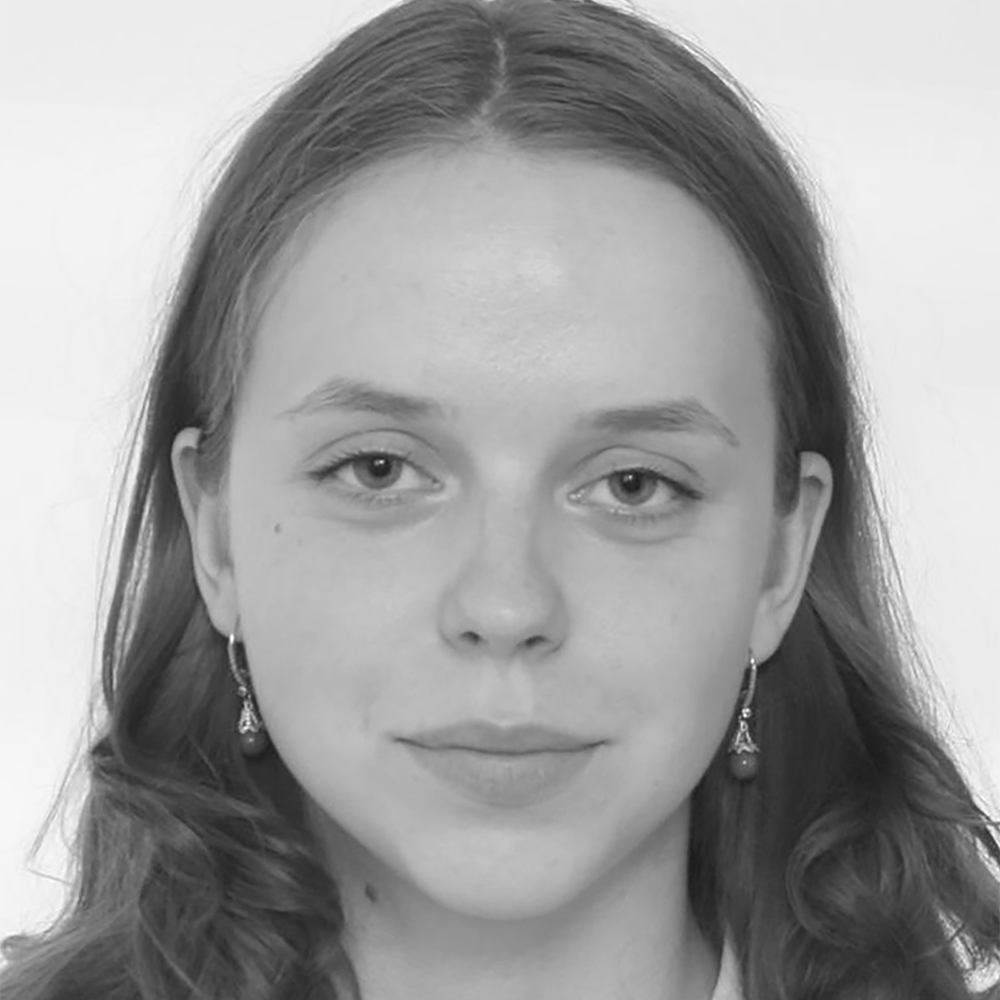
About RSDA Product Design programme
This year, 58 product design students graduated from RSDA after completing the new modular programme. Now, each student learns not only how to work with specific materials, as has been the practice previously, but also becomes familiar with various materials and technologies most commonly used in product design, acquiring skills and creating works in nine school workshops: wood, metal, ceramics, glass, composite materials, 3D printing, new materials, jewellery, and fashion accessories sewing classes. «Developing a new product requires knowledge not of one specific material or technology but of a solution to a current situation or problem, where the material is only a means of expression to materialise a specific idea,» emphasises Baiba Lindāne, head of the Product Design programme at RSDA.
The four-year programme is developed to give young students an understanding of the design development and product creation process, as well as work in the industry, including collaboration with clients. During the third year, students develop designs and implement products in collaboration with entrepreneurs, as well as state and municipal institutions. This gives an opportunity not only to create designs for a specific client but also to learn the communication skills needed when working on a project and to learn more about various industries.

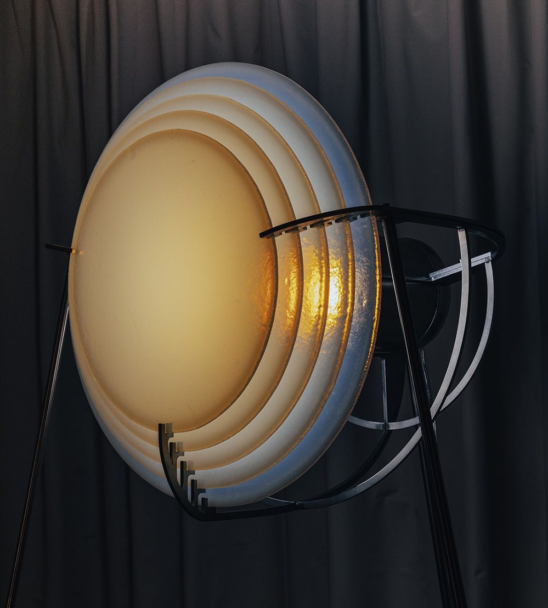
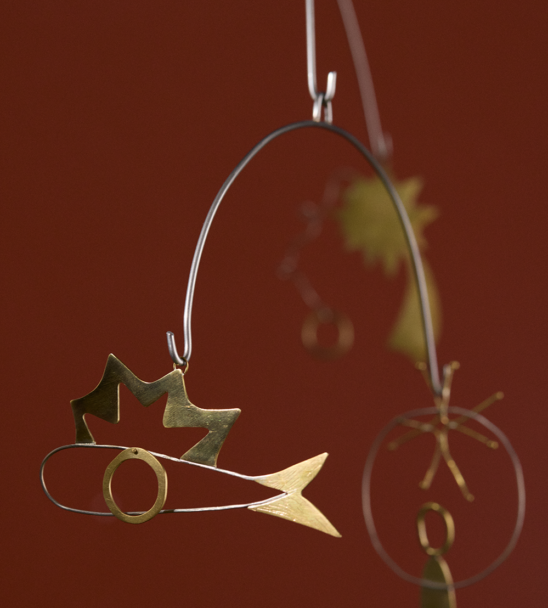
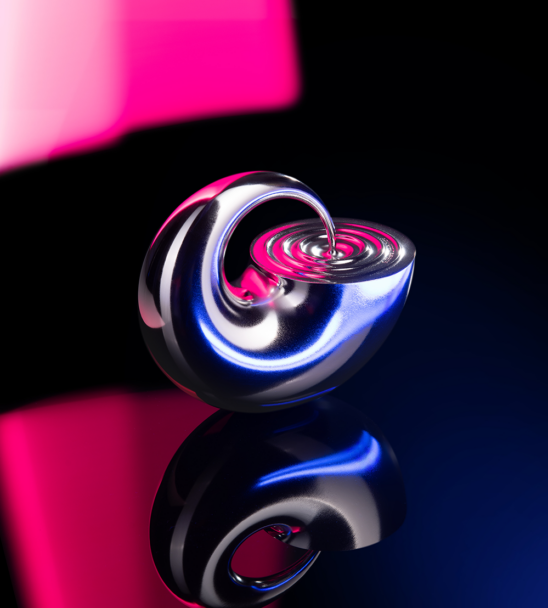


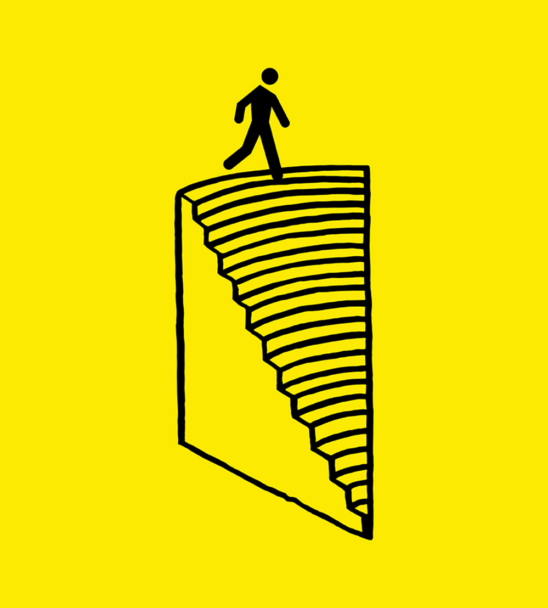
Viedokļi